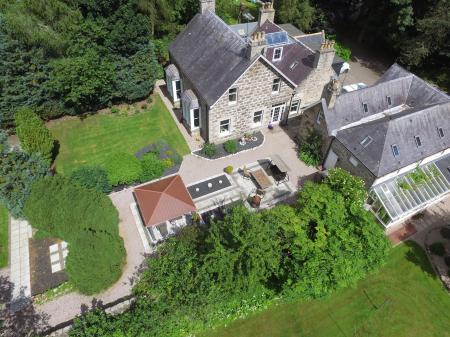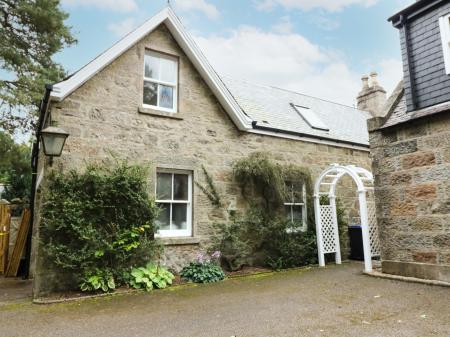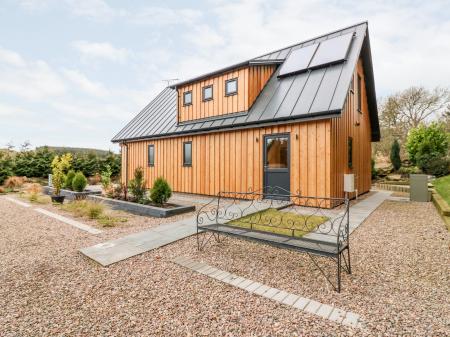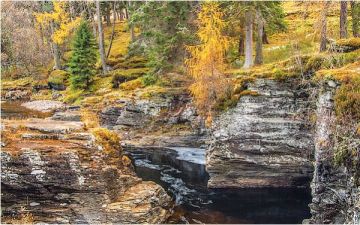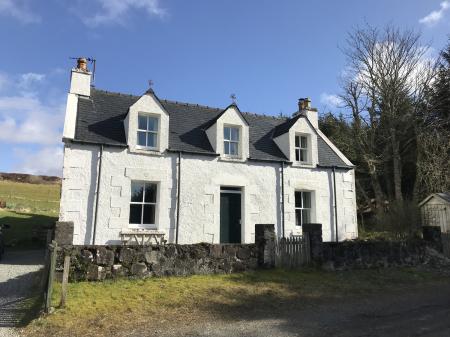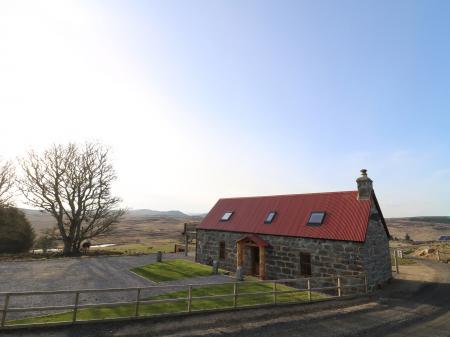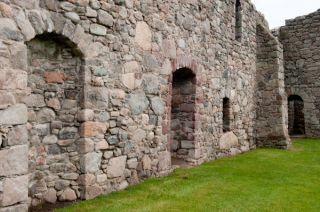
We do know that there was a community of secular priests here by the early 13th century. In 1219 that community was replaced when William Comyn, Earl of Buchan, founded a Cistercian abbey as a daughter house of Kinloss Abbey. Like most Cistercian monasteries, Deer followed a fairly standardized site layout.
When the abbey was dissolved in the Scottish Reformation it fell into decay, and some of the stones were used for other building projects. In 1854 a family mausoleum was built over the west end of the abbey church. This was later pulled down, and in 1926 the diocese of Aberdeen purchased the site.
Though the abbey is at least nominally in the care of Historic Scotland, it still belongs to the Roman Catholic diocese of Aberdeen. Perhaps that helps explain why it seems somehow different from most Historic Scotland sites. Part of that difference is the unusual site entrance; a high wall surrounds the abbey, which is entered through a striking neoclassical gateway with a prominent portico.
Though none of the remaining monastic buildings is terribly large, so many of the chambers survive at least in part, that it is easy to get an idea of the layout and structure of the abbey.
Strangely, the abbey church is one of the least preserved parts of the site; the church is obvious only by foundations walls at ground level. However, many other associated buildings remain, some of which have been restored to a good height. At one end of the site is a covered display area where finds from Deer are exhibited, including two stone coffins, a pair of carved heads, and a section of window tracery.
The abbey is an unmanned property and there are no visitor facilities. A very short drive from Deer Abbey is the recumbent stone circle of Aikey Brae, and the old kirk at Deer itself is also in the care of Historic Scotland.









 We've 'tagged' this attraction information to help you find related historic attractions and learn more about major time periods mentioned.
We've 'tagged' this attraction information to help you find related historic attractions and learn more about major time periods mentioned.